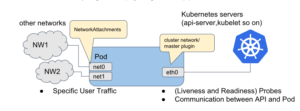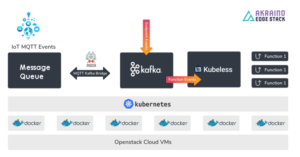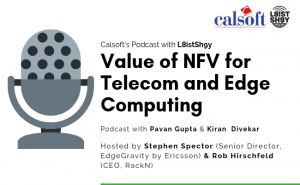
Evolution Of Data Centers
Clubbing of individual components of a Datacenter to form a single node is called a Converged Infrastructure. Clubbing of Software-Defined components to form a node is called Hyper-Converged Infrastructure. The next era is going to be the era of Hybrid Infrastructure where few components will be hardware-based and few will be software-based.

A Primer on Multus-CNI
This blog is for those who are looking forward to getting started with Multus CNI, the blog covers an overview of CNI in Kubernetes, Multus CNI plugin, basic configuration along with a quick deployment scenario.

How is Kubernetes Leading the Game in Enabling NFV for Cloud Native?
Read this article to know about how NFV core is driven by cloud-native projects, lead by Kubernetes to the orchestration of most of the projects plus managing containerized network functions.
Powering Edge With Kubernetes: A Primer
Adoption of Kubernetes into data centers or cloud has been remarkable since it was released in 2014. As an orchestrator of lightweight application containers, Kubernetes has emerged to handle and schedule diverse IT workloads, from virtualized network functions to AI/ML and GPU hardware resources.

Analysis: How are Faster Networks Advancing the New-Age Datacenters
Providing lower latency up to 10 microseconds is a new challenge for operators to enable new technologies in the market. For this to happen, data center need to complement the higher broadband network. It forms the base digital innovation to happen in future.

OpenStack and Ceph for Distributed Hyperconverged Edge Deployments
Red Hat team came with an innovative hyperconvergence of OpenStack projects along with Ceph software-defined storage. A solution shows, it is possible to gain better control all edge nodes by reducing control planes and maintain the continuity and sustainability of 5G network along with the performance required by new age applications.

Tungsten Fabric as SDN for Akraino Based Network Edges
Integration of TF with Akraino edge stack enable enhanced features and utilizes remote compute architecture of TF. A solution can orchestrate all types of workloads like PNFs, VNFs and CNF, implement service chaining at edge sites, workload and data transfer security, automating deployment of control functions and workloads, and more.

Serverless at the Edge: Resolving Resource Utilization Concerns
Edge computing is the critical architecture for enabling most 5G use cases. However, requirements and expectations from edge node in terms of computing resources is in question, and with the growing number of devices and data it could become cumbersome.

Value of NFV for Telecom and Edge Computing
L8istSh9y Podcast and Calsoft Inc. collaborated and had a discussion on the value of NFV for Telecom and Edge Computing. The guests invited were Pavan Gupta and Kiran Divekar, Software Architects, at Calsoft Inc. the podcast was hosted by Stephen Spector (Senior Director Digital Marketing, EdgeGravity by Ericsson) & Rob Hirschfeld (CEO, RackN).

Where the Cloud Native Approach is Taking NFV Architecture for 5G
This blog explains where cloud-native approach in NFV been this year and where it’s headed.
